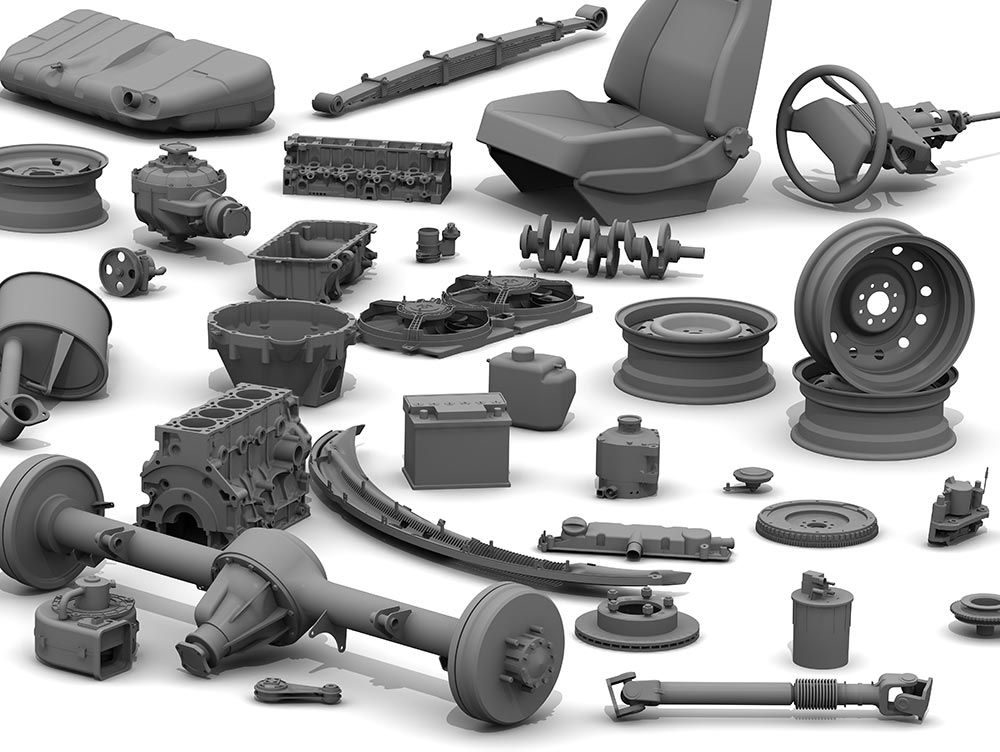It’s not all in your imagination. Despite having an IMDS reporting process in place for many years the rejection rate for your company’s IMDS submissions is rising. Some of the rejections are based on all-too-familiar, chronic issues your team has always struggled with. Some appear to be entirely new – and somewhat puzzling- new OEM requirements. Regardless of the specific technical issue, this situation is always frustrating. Unhappy customers, unhappy staff, PPAP delays, and increased costs are just some of the consequences.
From a tactical standpoint, most organizations do know what is required to fix the problems and to halt the submit/reject/re-submit/re-reject Do Loop . Most of the fixes are straightforward and are described in various guidance documents (see Top 24 Rejection Reasons). So it’s mostly just a matter of executing these instructions (a.k.a. Read the Manual). To be fair, if you have a large program and/or a diverse customer base, there are perhaps challenges with finding and keeping track of all these numerous and frequently changing requirements.
But if the information is all available and the problem is in the execution, how can an organization address the root causes of failure? By assessing the strategy and ensuring the quality controls are sufficient to allow the tactical team to succeed in delivering on its IMDS commitments. Below are what we have observed to be the most common sources of systemic IMDS quality issues, based on real-world IMDS programs that Tetra Tech has assessed.
Staff Turnover
Tetra Tech has had over 8,000 individuals sit through our IMDS classroom trainings so we have a decent sample size to assess staff turnover dynamics. Based on our dataset, we estimate job turnover for IMDS professionals to be well over double the average turnover rate for similar data entry positions in the automotive industry. This is based on the percentage of trainees who indicate that they are replacing a recent predecessor who held IMDS reporting duties but moved on, either to another employer, or to another position within the company.
The reasons for this turnover are undoubtedly complex, but anecdotally appear to include: burn-out, perceived lack of viable career pathways, and limitations based on part-time employee status. Recently, the turnover problem is being even further exacerbated by a robust job market which is giving employees more options than usual.
Lack of Internal Buy-in
IMDS requirements have varying levels of visibility within organizations. No doubt the incorporation of the requirement into the PPAP process raised awareness. So the good news in the automotive industry is that senior management is generally aware of the requirement but not often aware of the need to treat it as a true quality issue, rather than a “check the box” activity.
So, while there is a commitment to doing IMDS, sometimes there may not be a full understanding of what it means to do it right. In fact, that shortcoming is often one of the contributors to the turnover problem previously mentioned. We have had many conversations with IMDS professionals who are asked to meet aggressive customer deadlines but not provided the full support and backing from senior management to make sure the quality of the submissions is meeting those customer requirements.
That support is sometimes financial, but more often just involves an internal champion who is effective at enforcing cross-functional support for the effort. For example, many IMDS professionals struggle to obtain good data and support from their own purchasing departments in order to help them solicit IMDS data from their own supply chains.
Poor Offshoring Strategy
For organizations with enough scale to offshore the routine tasks of an IMDS program, major cost benefits can be realized. And there are many success stories in this regard when this has been done correctly. Unfortunately, some of the most vexing data quality issues can be directly attributed to poorly conceived, managed and executed offshoring approaches.
And since when you are offshoring you are usually doing it on a sizable scale, the scale of the quality issues can rapidly become enormous. Since your offshore team is cranking out massive amounts of data, the faster they go the worse things get; kind of like throwing your car into reverse and stepping on the gas. You are moving fast but in the wrong direction.
The answer is, not surprisingly, making sure that the data entry team has sufficient communication, management, and quality control. Failing to provide this type of oversight can lead to more than just poor quality data; for example, does your offshore team know about the legalities of the IMDS Terms of Use? Of course, the need for attentive management is not limited to offshore IMDS reporting campaigns; if your domestic IMDS team “goes rogue” on you they can create just as many problems.
Complacency
No one wants to admit to complacency. If there is a list somewhere of the Seven Deadly Sins of business, complacency is definitely on it. But it is clearly in human nature and, almost by the definition of the concept, it’s something that creeps up on organizations and blindsides them without warning. IMDS has been a requirement for many companies for nearly twenty years. The positive side of that is that IMDS is viewed as just another requirement for doing business in the automotive industry so it is in fact getting done.
But when few people question a requirement, there is a tendency to forget about the “why” of the requirement and the processes and procedures can take on a life of their own. The Check the Box mentality takes over. Take an honest look at your program; get an outside assessment/audit; get together with a peer organization and benchmark what they are doing right and doing wrong. Even if everything “seems” to be going well, don’t be afraid to step in and disrupt things every now and then.
Increased OEM/Tier 1 Scrutiny
Finally, one of the major reasons you are seeing increased IMDS rejections is perhaps unrelated to internal quality issues but simply to the fact that OEMs are scrutinizing submissions more closely.
Increasing regulatory pressure and expansion of the scope of regulations covered in IMDS stands behind some of that renewed focus. Other factors are, for some OEMs, they have been spending years just catching up with the mountain of data IMDS has provided and are only just now getting around to digging into the details of how accurate and useful the data actually is. For this reason, customer communication is more important than ever. Although it doesn’t always feel like it, your OEM and Tier 1 customers are completely aligned with you on what they want: as few rejections and re-submissions as possible.

Summary
From the discussion above, here are some important take-home messages. Hopefully they will help you break free from the submit/reject/re-submit/re-reject cycle.
- Make sure your IMDS team has sufficient training and bench depth to weather the challenges of staff turnover. Also, many of our IMDS training attendees have mentioned low job satisfaction and not feeling a part of the broader team. They need to feel valued and part of an important effort.
- Enlist a corporate champion from senior management (i.e. VP level) to communicate the importance of IMDS to your customer relationships. Create a cross-functional team to support the core IMDS team. This cross-functional team could draw from Purchasing, IT, Engineering, Sales, Quality and other departments who are ancillary to the success of the core team.
- If you are offshoring, make certain that the team has sufficient oversight and quality control. Because offshoring usually involves a significant scale of effort, it is particularly important to catch quality issues early before they spiral out of control.
- Get an assessment or audit of your program. Get together with peer companies and benchmark best practices. Industry organizations, such as Suppliers Partnership, who work on IMDS issues can be useful for brokering these opportunities.
- Communicate, communicate, communicate with your customers. Do not be passive and waiting for them to approach you with problems. They will value your proactive approach which will create goodwill for you, both in the IMDS arena and elsewhere in the business relationship.
To increase your IMDS reporting and submission capabilities, explore our robust online IMDS certification trainings.






